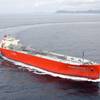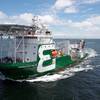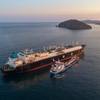North P&I Club Guidelines on Minimising Risk from Ro-Ro fires
North P&I Club has published a new loss prevention briefing on how to prevent, detect and fight fires on roll-on-roll-off (ro-ro) vessels and car carriers. Such vessels are twice as likely to catch fire as other ships and vehicle-deck fires are notoriously difficult to contain and put out.
The new 10-page briefing, which is free to download from the Club’s website, explains the risks of ro-ro and car carrier fires in detail. It then sets out a comprehensive series of recommendations covering training, maintenance, vigilance, reaction and procedures.
Deputy loss prevention director Colin Gillespie says, ‘We continue to see fires developing on ro-ro vessels that can quickly get out of control, putting lives at risk as well as causing significant damage to the vessel and cargo.’
Vehicle fires collectively account for a large number of fires but there are different sources of ignition. Electrical fires in vehicles are common, with increasingly sophisticated electronics – particularly in hybrid and electric cars – meaning new cars can be just as hazardous as used ones unless properly isolated. Fires in vehicle cabs are also common, while other causes include hot engines, discarded cigarettes and fuel leaks.
‘As in every incident where fires are involved, early detection is key,’ says Gillespie. ‘Modern, well-maintained fire-detection systems are capable of identifying the location of smoke and fire to a reasonable degree of accuracy. It is important that the crew understand these systems and that alarms are properly investigated.’
Once detected, North says it is vital to contain a fire, which means making sure all ventilators are properly closed – particularly if a carbon dioxide suppression system is being used. ‘Just a small gap in one louvre housing can render the system ineffective,’ says Gillespie. ‘And if water drenching systems or fire hoses are used – including for boundary cooling – it is vital to check the water is draining away and not destabilising the vessel through free-surface effects.
North says that a well-maintained vessel manned with a well-drilled crew who are familiar with all aspects of the fire-fighting equipment and response on board will minimise the damage a fire may cause. ‘Our new briefing discusses how to positively react to a fire, problems that may be experienced when fighting fires and what can be done to prevent them starting in the first place,’ says Gillespie.










